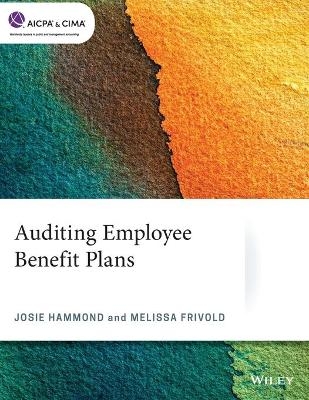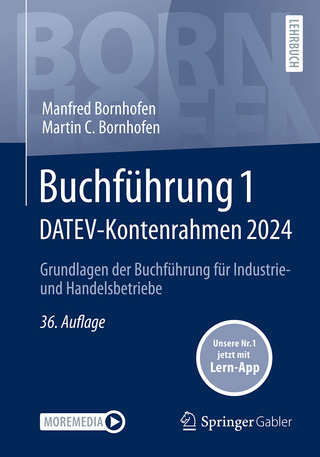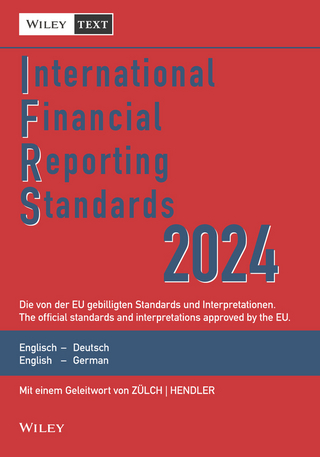
Auditing Employee Benefit Plans
John Wiley & Sons Inc (Verlag)
978-1-119-76380-2 (ISBN)
- Titel ist leider vergriffen;
keine Neuauflage - Artikel merken
FASB ASU 2017-06, which significantly impacted master trust accounting, reporting and disclosures for employee benefit plans
PCAOB adopted AS 3101 in 2017 which resulted in significant changes to the existing auditor's report.
New insert for SAS No. 136, Forming an Opinion and Reporting on Financial Statements of Employee Benefit Plans Subject to ERISA
The American Institute of CPAs (AICPA) is the world's largest member association representing the CPA profession, with more than 429,000 members in the United States and worldwide, and a history of serving the public interest since 1887. AICPA members represent many areas of practice, including business and industry, public practice, government, education, and consulting. The AICPA sets ethical standards for its members and U.S. auditing standards for private companies, nonprofit organizations, federal, state and local governments. It develops and grades the Uniform CPA examination, offers specialized credentials, builds the pipeline of future talent and drives professional competency development to advance the vitality, relevance and quality of the procession.
Chapter 1 1-1
Employee Benefit Basics 1-1
Plan as defined by ERISA 1-3
Plans as defined by GAAP 1-5
Popular plan types 1-7
Tax compliance elements 1-16
Key plan operational concepts 1-23
Understanding the plan under audit 1-27
Chapter 2 2-1
Accounting and Reporting Standards 2-1
Applicable guidance 2-3
Fair value measurements 2-5
Financial statements 2-9
Investment valuation and income recognition 2-11
Accounting and reporting for investment contracts 2-13
Accounting and reporting for contributions 2-15
Notes receivable from participants (participant loans) 2-17
Operating assets 2-18
Accrued liabilities 2-19
Accounting for uncertainty in income taxes 2-20
Plan mergers 2-22
Terminating plans 2-23
Subsequent events 2-25
Recent developments 2-26
Chapter 3 3-1
Reporting and Audit Requirements 3-1
Audit requirement 3-3
Regulatory reporting and disclosure requirements for pension and welfare plans 3-10
Deadlines and extensions 3-11
The audit guide 3-13
ERISA versus GAAP 3-14
Audit considerations 3-16
Common audit concerns or deficiencies 3-21
Using the work of internal auditors 3-29
Recent developments 3-30
Chapter 4 4-1
Audit Planning 4-1
Key parties 4-3
Client acceptance 4-4
Scope and timing 4-7
Gaining an understanding of a plan, its environment, and its internal controls 4-10
Risk assessment 4-17
Audit documentation 4-23
Analytical procedures 4-25
Initial audit procedures 4-27
Chapter 5 5-1
401(k) and Other Defined Contribution Pension Plans (Except ESOPs) 5-1
Determination of benefit amount 5-2
Net assets available for benefits 5-3
Changes in net assets available for benefits 5-4
Investments 5-5
Contributions receivable 5-14
Notes receivable from participants 5-16
Other operating assets 5-18
Cash 5-19
Accrued liabilities 5-20
Investment income 5-21
Contribution revenue 5-22
Participant data and participant accounts 5-24
Participant-directed versus self-directed 5-27
Benefit payments 5-28
Expenses 5-31
Financial statement presentation and required disclosures 5-33
403(b) plans 5-35
Chapter 6 6-1
Defined Benefit Pension Plans 6-1
Determination of benefit amount 6-2
Financial statements 6-3
Investments and investment income 6-6
401(h) accounts 6-8
Funding 6-10
Participant data and plan obligations 6-13
Benefit payments 6-15
Expenses 6-16
Financial reporting and disclosure 6-17
Plan transfers (plan mergers, spin-offs, and other transfers) 6-18
Terminations 6-19
Chapter 7 7-1
Health and Welfare Plans 7-1
Defined contribution versus defined benefit 7-3
Challenges in auditing a health and welfare plan 7-4
Components of the financial statements of a welfare benefit plan 7-7
Unique features of a health and welfare benefit plan 7-13
Disclosure requirements 7-21
Reporting requirements 7-25
Chapter 8 8-1
Other Auditing Considerations 8-1
Related party and party in interest transactions 8-2
Prohibited transactions 8-7
Untimely deposits of employee deferrals 8-8
ERISA supplemental schedules 8-10
Form 5500 information consistency with financial statements 8-13
Tax status 8-15
Auditing corrective actions 8-18
Certified information 8-19
Investment confirmations 8-21
Going concern 8-22
Chapter 9 9-1
Wrapping Up 9-1
Commitments and contingencies 9-2
Subsequent events 9-4
Representation letter from management 9-6
Communication of internal control-related matters identified in an audit 9-9
Management advice letter considerations 9-12
Communication with those charged with governance 9-13
Appendix A A-1
Illustrative Financial Statements and Disclosures for a Defined Contribution Plan With Participant-Directed and Nonparticipant-Directed Investment Programs A-1
Appendix B B-1
Illustrative Financial Statements and Disclosures for a Defined Benefit Plan Assuming an End-of-Year and Beginning-of-Year Benefit Information Dates B-1
Appendix C C-1
Illustrative Financial Statements and Disclosures for a Health and Welfare Plan C-1
Appendix D D-1
Illustrative Supplemental Schedule of Assets D-1
Appendix E E-1
Illustrative Supplemental Schedule of Reportable Transactions E-1
Appendix F F-1
Illustrative Example of an Engagement Letter for a 401(k) Employee Benefit Plan Audit Engagement F-1
Appendix G G-1
Small Pension Plan Audit Waiver Decision Tree G-1
Appendix H H-1
Report Modifications Chart H-1
Appendix I I-1
Pension Plan Audit Decision Tree I-1
Appendix J J-1
Illustrative Supplemental Schedule of Delinquent Participant Contributions J-1
Glossary Glossary 1
Index Index 1
Solutions Solutions 1
Chapter 1 Solutions 1
Chapter 2 Solutions 3
Chapter 3 Solutions 5
Chapter 4 Solutions 6
Chapter 5 Solutions 8
Chapter 6 Solutions 10
Chapter 7 Solutions 12
Chapter 8 Solutions 14
Chapter 9 Solutions 17
| Erscheinungsdatum | 20.10.2020 |
|---|---|
| Verlagsort | New York |
| Sprache | englisch |
| Maße | 218 x 277 mm |
| Gewicht | 962 g |
| Themenwelt | Wirtschaft ► Betriebswirtschaft / Management ► Rechnungswesen / Bilanzen |
| ISBN-10 | 1-119-76380-0 / 1119763800 |
| ISBN-13 | 978-1-119-76380-2 / 9781119763802 |
| Zustand | Neuware |
| Haben Sie eine Frage zum Produkt? |
aus dem Bereich


